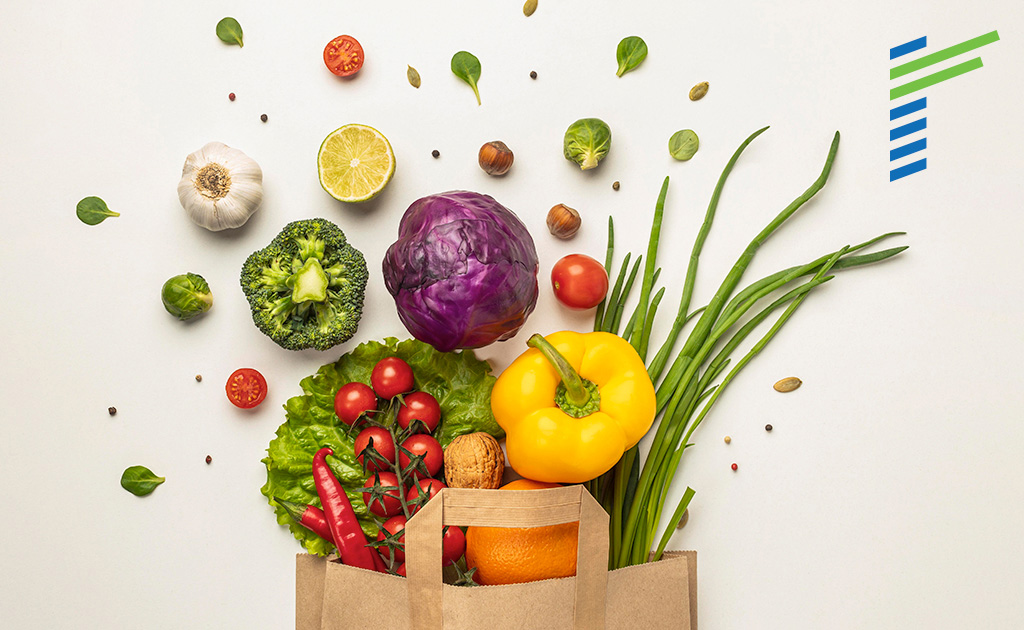The food and beverage industry is huge, with estimates putting it at 10% of global gross domestic product. This puts the turnover for food and beverage companies, which encompasses agriculture and animal husbandry to food processing, distribution, retailing and food services (such as restaurants), at about $5 trillion a year.
Market demands are changing. Some of the more prevalent trends include:
- Increasing demand for health and wellness foods, particularly in the form of immunity-boosting foods and drinks.
- Growth in the sectors for organic, non-genetically modified, and vegetarian foods. (On the other hand, there’s a rising demand for meat in India.)
- Reductions in artificial ingredients in favour of more natural ingredients.
- Reductions in the consumption of processed meats, which has been linked to cancer by the World Health Organization.
- Reduction of salt, sugar and hydrogenated trans fats, which in some countries is backed up by legislation.
- Strengthening push around the world for food and beverage companies to reduce the amount of plastic packaging used.
- Increasing demand for food safety, transparency, and sustainability. As consumers demand to know more about the foods they eat, food geographical origins and safety concerns are now costing the industry billions each year.
- Increasing concerns about the income levels and support for the produce communities and environments, including issues such as water stewardship.
- A surge in home delivery services, catalysed by the covid pandemic.
Whilst food and beverage product portfolios continue to evolve, sourcing and procurement issues are becoming increasingly important, manufacturing assets must continue to improve operations management, and the selling functions must stay on top of the Fast-Moving Consumer Goods (FMCG) and home deliveries game.
There are multiple issues to address, here are just a few:
Innovation
With so many different products available for purchase across a multitude of channels, product innovation and differentiation will be increasingly important to middle-market food and beverage companies. For one, plant- and cell-based disruption will continue to increase. Demand for plant-based milk substitutes has rocketed recently, and consumers are consuming more plant-based meat alternatives – they are growing more comfortable with the idea of meat coming from a lab instead of a farm. Many of the most significant innovations in recent years have come from start-up companies. Whilst acquiring these companies is one option, the need to accelerate new product development and time to market is the more likely route.
Customer Centricity
With consumers becoming savvier, more informed and demanding for change, it’s no surprise that customer centricity is now at the heart of every food and beverage company. Companies can better meet the demands of their target markets by tapping into customer insights like behavioural segmentation and product preferences and centring their innovation efforts around them. That doesn’t just mean the product itself, but also the end-to-end customer experience from shopping to eating, to delivery to the doorstep.
Sourcing and procurement
The 2013 European horse meat scandal, where produce advertised as beef frequently contained large components of other meats such as horse meat and pork, caused consumer outrage. It was one of many triggers for increasing proactivity on the part of the consumer.
Increasingly in Western markets, companies are being sued for purchasing and selling produce sourced from locations that disregard environmental, labour and food standards. Getting to grips with your supply chain and knowing all the parties involved is no small task, and whilst complex, the risks of not doing so are significant.
Operations management
With rising costs and increased uncertainty, such as rising storage costs, increasing labour costs and tightening workforce regulations, consumers and food retailers will only absorb only so much of the cost. So, companies will have to look to new, innovative solutions to help control their costs and still grow. This goes beyond adopting the latest digital solutions. There are still production losses that can be linked to undermanaged activities, such as Mean Time To Repair when an asset suffers downtime or ensuring loading and/or speeds expectations are being met.
Distribution, wholesale, and retail
For modern trade outlets, there is increasing transparency on supply and demand. However, this information is often not available to the manufacturers, and most of the world’s retailing are still in more conventional channels. This means the ability to keep track of what is on the shelves of the outlets is a crucial competitive advantage.
In the situations where third party distributors interact with the outlets, the FMCG company tends to lose touch with its retail base – the FMCG company starts to treat the distributors as their end customers, not the retailers or customers. This is a very risky position as the distributors gain a great deal of power over the distribution channels. Whilst technological solutions are available to support improved visibility, nearly all of them still require feet on the streets to supervise effective distribution and merchandising. Even when in place, adherence to best practices can often be lacking. Still, distribution channels are compressing. Manufacturers are now dealing directly with retailers, sometimes even directly with consumers through ecommerce. In the West, to an extent, distributors have been put out of business.
Digitisation
As in other sectors, food and beverage businesses are looking for help in adopting new technologies to improve their processes and competitiveness. Digitisation in the food and beverage industry is having a radical effect at every stage in the value chain, from sourcing, through production and onwards into distribution and sales:
- Internet of Things (IoT). In 2018, there were seven billion connected devices. Two years later in 2020, there are 20 billion, exceeding all forecasts. With 5G and satellite Internet access by Starlink and its competitors, the new IoT standards could mean, in theory, that one can sense and track almost anything anywhere on the surface of the planet. Given that tracking and tracing is one of the most important aspects of any food and beverage company – increasingly on the supply side – demand for IoT solutions will continue to increase.
- Meeting ever stricter regulations and standards. It should come as no surprise that the industry is one of the most tightly regulated. Using technology for the HACCP process (hazard analysis and critical control points) and maintaining databases helps organisations to monitor their value chains with total visibility and ensure compliance with food safety standards.
- Automation. It is difficult to discuss where digitisation in the Food and Beverage industry is going without mentioning automation. For example, take process monitoring and predictive maintenance: cheap remote IoT sensors can replace expensive hard-wired instrumentation and sensing equipment in just any process. Consequently, the ability to scale up predictive maintenance easily and significantly and thus reduce slowdowns and downtimes is increased.
- Using data better. Many businesses today do not fully exploit the mountains of data they currently have to improve their operations. Companies are increasingly using software to establish a transparent view of their value chain, from sourcing to manufacturing to distribution. This makes decision-making a lot easier as businesses are better able to identify issues they couldn’t previously.
The question is not whether food and beverage companies need further digital transformation, but whether they can implement it successfully. A high percentage of digital transformation efforts fail. Food and beverage businesses that want to meet the demands of their consumers and leapfrog over their competitors cannot afford to be one of the failures. To implement successfully, companies must ensure that the digital transformation contributes to company goals and strategy.
Conclusion
In summary, the food and beverage industry is facing some unique challenges in addition to those in common with other industries, with digitisation on a fast upward trend that is unlikely to abate soon. On top of all this, more recently, due to the pandemic, the sector must also grapple with depressed agricultural output and disrupted supply chains.
To survive in a market with accelerating change, executives must make transformation a prerogative and ensure that change initiatives succeed. This doesn’t just mean change initiatives that bring about short-term gains. Instead, it’s critical to embed a culture of continuous change so that change becomes part of the company culture rather than something that happens when a crisis loom.










